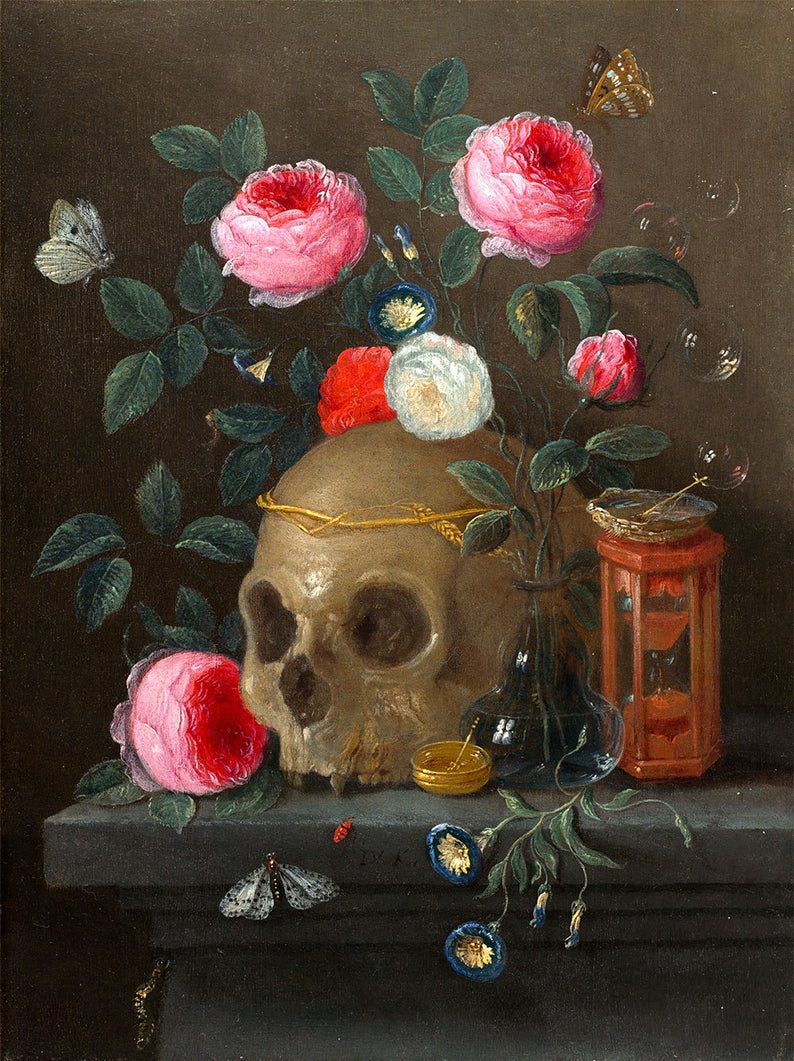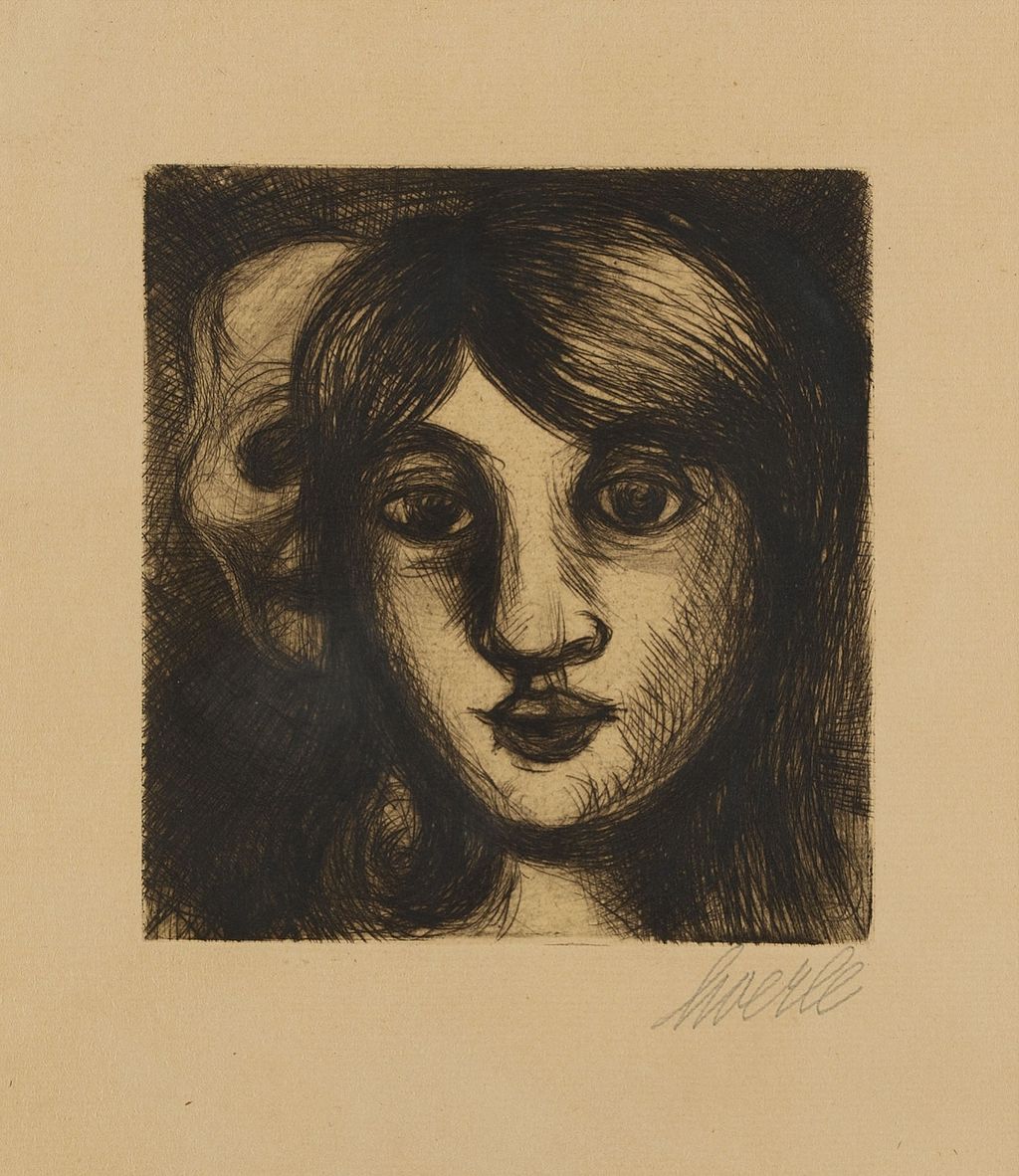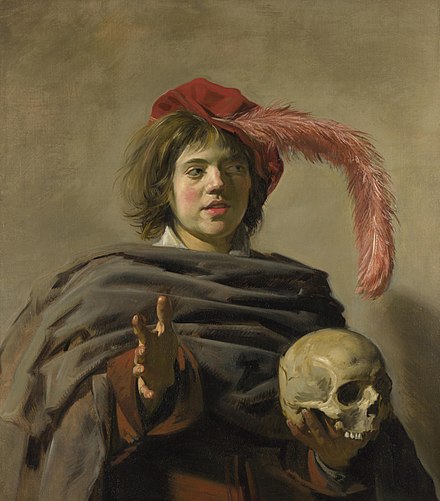Among the pilfered treasures of the British Museum – the black heft of the Rosetta Stone, the gray bulk of a monolithic Easter Island head, the cool whiteness of the Elgin Marbles – there are a few galleries with artifacts dug from closer ground. In the seventeenth-century, English antiquarians curious about sites like Stonehenge began to sift through their own soil. Among those collections, there are a number of funerary urns pulled in 1658 from a sandy field near Walshingam Norfolk.
Within a typical urn there might be “two pounds of bones, distinguishable in skulls, ribs, jaws, thigh-bones, and teeth, with fresh impressions of their combustion,” as the discoverer wrote. Plaintive in their simplicity, the urns are only a foot tall, simple designs pinched into the clay by hand or stylus before some ancient kiln baked them to blackness. The urns appear ancient, primitive, archaic, primal. Cross-hatched circles line the circumference and diagonal slashes frame dots pressed like birthmarks on flesh. In their mournful minimalism there is stark beauty, the type of unadornment that makes them seem as if relics from a quiet, timeless place.
Their discoverer was a curious, erudite, humane physician and essayist named Thomas Browne. Archeology being in its infancy, Browne misidentified the urns as Roman, with later specialists dating them as from the Anglo-Saxon period. Regardless of their provenance, Browne sensed intimations of eternity, missives from that country of death. Though not uncheerful, Browne was still a thinker predisposed to melancholia, an affliction that had a bit of the fashionable about it. Considering his urns, Browne argued that how “Time which antiquates Antiquities, and hath an art to make dust of all things” was a reminder that the “long habit of living indisposeth us to dying.”
Both quotations come from Browne’s Hydiotaphia, or Urn Burial (the cumbersome Latinate word is just a translation of the English phrase next to it). Much more than simply an account of archeological curiosity, Urn Burial is arguably one of the most thoughtful, moving, and wondrous reflections on mortality written in the English language; a book all the more wondrous not in spite of its melancholia, but because of it. Browne writes that “man is a Noble Animal, spending in ashes, and pompous in the grave, solemnizing Nativities and Deaths with equal luster, nor omitting Ceremonies of Bravery, in the infamy of his nature.” He is a witness of that dusk when the certainties of faith were just beginning their sunset, but an idiom of the sacred still held a charged potential.

By all accounts a pious (if liberal) Anglican, Browne is conversant with doubts; his curiosity countenances a skepticism to what death means, for “Darkness and light divide the course of time, and oblivion shares with memory, a great part even of our living beings.” Browne is the great notary of gloaming, of the intermixed darkness and light, whether it be the transitionary period of his century or the caste of his own mind which could sometimes relish the thought of eternal life and sometimes despair at the possibility of extinction, while uncovering a way to live between those two extremes as surely as an Anglo-Saxon urn can be pulled from the earth.
Two centuries later and Ralph Waldo Emerson would say of Urn Burial that it “smells in every word of the sepulcher” – this wasn’t necessarily an insult. Browne’s prose has often been counted a rare delight, including advocates from Edgar Allan Poe and Herman Melville (who called him a “crack’d archangel”), to Virginia Wolf and Jorge Luis Borges. His writing isn’t always easy; no less an enthusiast than the eighteenth-century lexicographer Dr. Johnson described Browne’s style as a “tissue of many languages; a mixture of heterogeneous words, brought together from distant regions… and drawn by violence into the service of another.”
Yet there is a necessity to this style in confronting the grave. The seventeenth-century, fractured by religious strife and doubts incubated by new science and philosophy, could not simply prescribe the palliatives of religious certainty when it came to the universal fear of death. The difficulty, though it must also be said exquisite beauty, of Browne’s serpentine, unwieldy, Latinate, Mandarin prose is that the doctor was attempting to think beyond simple answers to his questions, to imagine how we face the rich, black soil of a Norfolk burial without assurance of greater meaning.
Browne was no atheist, and yet during his age the old truths seemed less and less obvious. Mortality’s literary canon goes back deep into antiquity, but Urn Burial gives voice to an anxiety of not just damnation, but extinction; acknowledging the fear of uncertainty and in turn generating something beautiful out of that. When it comes to meditating on our deaths, such prose doesn’t necessarily approach what lay beyond (for that’s veiled from us), but rather simply conveys a sense of the numinous, the sacred, and the transcendent as it exists in every pregnant second. The physician’s tone is not one of despair, for “Life is a pure flame, and we live by an invisible Sun within us.”
Such writing was composed just as the embers of absolute faith sunk below a darkening horizon, as when Donne observed that “new philosophy calls all in doubt.” For the neophyte looking to supplement their reading on mortality, there is a veritable syllabus that approaches final things in a manner like Browne. Of a similar caste of mind is Robert Burton, author of 1621’s massive Anatomy of Melancholy, which remains the longest psychological text ever written in English. The seventeenth-century may have been an age of melancholy, but it was also an age of curiosity and delight, when explorers would assemble exhibits called “Wonder Cabinets,” filled with beautiful shells, gems, and artifacts (such as ancient urns). In some ways Burton’s approach to both his subject, and to death, was to aestheticize them, to examine even death with delight, so that “All my joys to this are folly/Naught so sweet as melancholy.”

Then there is the divine poet who went from being the Catholic rake, Jack, to the Anglican dean Dr. Donne, without ever altering the substance of his commitments, and whose Holy Sonnets are the greatest poetic consideration of death in literary history. He of the arresting detail, the so-called “metaphysical conceit,” from the image of graverobbers exhuming a corpse to discover “A bracelet of bright hair about the bone” in memory of the deceased’s beloved, to that of a diseased body examined by doctors as if they were “Cosmographers, and their map, who lie/Flat on this bed.” In 1624’s Devotions Upon Emergent Occasions Donne reflects on what it’s like to be a patient with (what he believed to be) a terminal illness, writing with frankness that “I know not what fear is, nor I know not what it is that I fear now; I fear not the hastening of my death, and yet I do fear the increase of the disease” – an honesty which contemporary palliative care-givers should keep in mind.
Donne was the sort of man who had a lithograph of himself in his death-shroud made and hung opposite his bed, so that upon wakening he could remember that his days were limited. It was in that shroud that he’d preach his most celebrated sermon in 1631, given shortly before he would die, where he acknowledged that death is something which perennially stalks us, “the manifold deaths of this world.” What’s so powerful about Donne’s approach is this this awareness of mortality permeates our existence from womb to tomb, so that “Our critical day is not the very day of our death, but the whole course of our life.”
Browne, Burton, and Donne were all united in a certain humane sensibility, something often called latitudinarianism (fantastic word), which broached a high degree of tolerance when it came to religious certainties. Anxiety has always surrounded death, but in the seventeenth-century there was perhaps a new fear – of Nothingness. These writers deployed Ars Moriendi and Memento mori to approach death in a century when consoling truths were drifting away, like smoke from a funeral pyre. However, the greatest consideration of mortality from the century, perhaps any century, wrestled with those uncertainties, and spun beauty from our doubts and fears.
Try and remove yourself from the clichés of Shakespeare’s 1602 Hamlet: “To be, or not to be, that is the question.” All of that dramatic baggage, black turtle-neck clad Hamlet holding Yorick’s skull, Laurence Olivier enunciating every syllable in his ridiculous trans-Atlantic accent. Shakespeare’s greatest hits – “slings and arrows of outrageous fortune,” “sea of trouble,” “mortal coil.” So famous are these lines, so estimably quotable, that of no fault of Shakespeare’s they’ve almost achieved self-parody. I once saw a production in Glasgow where the director moved the soliloquy to the prologue, just to get it out of the way.

But when approached with fresh eyes, what the passage presents is nothing less than a subversive Ars moriendi for a secular age, where even after God has departed, a vocabulary of the sacred still exists. We have the consideration of death as a nothingness, “To sleep, perchance to dream… For in that sleep of death what dreams may come.” A bluntness to Hamlet’s skepticism, for neither heaven nor hell are promised, but rather the uncertainty concerning the “dread of something after death,” this “undiscovered country from whose bourn/No traveler returns, [which] puzzles the will” (note the personal skepticism in that final word’s pun).
Hamlet’s contemplations are a strange type of manual, for Shakespeare wrote long after Renaissance and Reformation had eroded antique certainties. That’s what Shakespeare presents: the wisdom that even in uncertainty, death demands our attention; even with skepticism, mortality requires our contemplation. Ironically, Shakespeare’s greatest argument here isn’t anything he actually says, rather it’s in how he says it. By using a sacred language, even as he meditates upon the enormity of all which we shall never know, he demonstrates that there is still something of the holy in our poetry, regardless of what country (or none) we’re headed towards in the hereafter.
Ed Simon is a staffwriter for The Millions and an editor for Berfrois. His book “Furnace of this World; or, 36 Observations about Goodness” was published by Zero Books this summer. He can be followed on Twitter @WithEdSimon.

